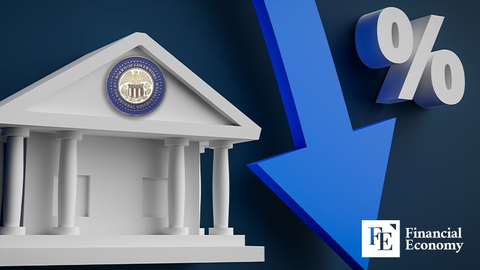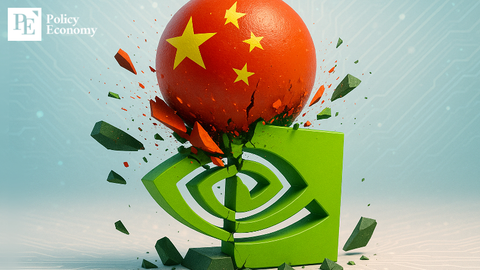France’s Call to Reclaim the Statue of Liberty: A Symbolic Protest Against U.S. Policies
Input
Modified
The Statue of Liberty’s Origins and Evolving Meaning Political Friction: Europe’s Growing Discontent with U.S. Policies A Symbol of a Changing Transatlantic Relationship

The Statue of Liberty’s Origins and Evolving Meaning
In an era marked by heightened global tensions and shifting political alliances, the relationship between Europe and the United States has grown increasingly strained. Amid this backdrop, a provocative statement by a French Member of the European Parliament (MEP) has caught international attention: "Give us back the Statue of Liberty." The suggestion, which initially appeared to be a lighthearted jest, quickly gained traction as a symbol of the deepening frustration many in Europe feel towards the U.S., especially after the tenure of former President Donald Trump. The Statue of Liberty, an enduring symbol of freedom and democracy, has become an unexpected focal point of diplomatic rhetoric, signaling the growing dissatisfaction in France with the United States' recent foreign policy and its impact on the transatlantic relationship.
This call to return the Statue of Liberty to France is not just a joke but rather a pointed commentary on the increasing polarization between Europe and the U.S., especially under the leadership of former President Trump. It underscores the historical context of the statue's gift and serves as a metaphor for the discontent Europe feels about how America’s recent actions have altered the dynamics of global relations. It’s more than a matter of international diplomacy—it’s a symbolic reflection of Europe’s growing frustration.
The Statue of Liberty, gifted to the United States by France in 1886, has long been an emblem of friendship between the two nations. Standing tall on Liberty Island in New York Harbor, the statue was designed by French sculptor Frédéric Auguste Bartholdi and was intended to celebrate the centennial of the American Declaration of Independence. It was also a gift symbolizing the shared values of freedom, democracy, and the pursuit of liberty—the very ideals that both France and the United States cherished.
Over the years, the statue has become a powerful symbol not just for Americans, but for millions around the world who view it as a beacon of hope and a reminder of the possibilities of freedom. For many in Europe, especially the French, the statue has come to represent the values of liberty and equality that they hold dear.
Yet, in recent years, that sense of shared values seems to have been eroded, particularly during the presidency of Donald Trump. Under Trump’s leadership, the U.S. took stances that many in Europe viewed as contrary to these values, from withdrawing from international agreements like the Paris Climate Accord to imposing tariffs on European goods and engaging in aggressive rhetoric toward key allies. This shift in American policy, coupled with the rise of nationalist movements within the U.S. and elsewhere, has caused a rift in the long-standing relationship between Europe and America.

Political Friction: Europe’s Growing Discontent with U.S. Policies
It was during a period of heightened tensions over trade tariffs, environmental policies, and international relations that French MEP Raphaël Glucksmann made his striking suggestion: "Give us back the Statue of Liberty." Glucksmann’s comments, made in a speech addressing the European Parliament, were framed as a symbolic protest against the growing distance between Europe and the U.S. He argued that the statue, which once represented the friendship and shared values between the two nations, now serves as a reminder of the ways in which the U.S. has distanced itself from those values under Trump’s administration.
For many in France and across Europe, Glucksmann’s statement was seen as a critique of American foreign policy, particularly in the wake of Trump’s actions on the world stage. The French, who have long prided themselves on their commitment to internationalism and multilateralism, found themselves at odds with a U.S. president who seemed to prioritize unilateralism and national interests over collective action.
Glucksmann’s call for the statue to be returned to France was, in many ways, a symbolic gesture that highlighted the deep frustration felt by many Europeans. It was a reminder of the bonds that once existed between the U.S. and Europe, and how those bonds had frayed under the policies of the Trump administration.
In response to the suggestion, the White House was quick to dismiss Glucksmann’s comments as a mockery. Press Secretary Kayleigh McEnany responded to the calls for the statue’s return with a firm statement: "You gave it, we keep it!" This blunt retort reflected the American administration’s unwillingness to entertain the notion of returning a symbol of American identity and national pride, despite the growing frustrations in Europe.
McEnany’s response was perhaps predictable, given the broader political climate at the time. Under Trump’s leadership, the U.S. was often less receptive to the concerns and criticisms of its allies, particularly when it came to issues of trade and international cooperation. Instead, the Trump administration frequently adopted a confrontational approach to diplomacy, often seeking to project strength and assert U.S. interests without regard for the long-standing partnerships that had defined American foreign policy for decades.
In the case of the Statue of Liberty, the White House’s dismissal of Glucksmann’s comments can be seen as part of this broader pattern of disengagement from Europe’s concerns. It reflects a sense of American exceptionalism and a belief that the U.S. is entitled to keep the statue as a symbol of its national identity, regardless of the growing frustration felt by many in Europe.
The call for the return of the Statue of Liberty comes at a time when tensions between the U.S. and France are already running high. In recent years, the U.S. has pursued policies that many in France have seen as damaging to European interests, particularly in the areas of trade, climate change, and defense. Trump’s decision to withdraw from the Paris Climate Agreement was a particular point of contention, as it signaled a retreat from global cooperation on environmental issues.
Additionally, the imposition of tariffs on European goods, particularly steel and aluminum, has been a major source of frustration for France and other European Union (EU) members. French Prime Minister Jean Castex has publicly criticized the U.S. for its trade policies, arguing that the tariffs are unfair and damaging to European businesses. This frustration has been compounded by the broader sense that the U.S. under Trump was undermining the multilateral institutions that Europe has worked hard to build in the post-World War II era.
The French government, in particular, has found itself increasingly at odds with American policies. The Statue of Liberty, once a symbol of shared ideals and friendship, has now become a reminder of the growing divide between the two nations. The mockery surrounding its return is more than just a joke—it is a reflection of how deeply the relationship between Europe and the U.S. has soured.

A Symbol of a Changing Transatlantic Relationship
The suggestion to "give back the Statue of Liberty" may seem like an absurd or even humorous remark, but it speaks to a much deeper issue. It is a symbolic expression of Europe’s growing dissatisfaction with the U.S. and its leadership under Trump. The statue, once a symbol of unity and shared values, now represents the fractured relationship between two once-great allies.
This call for the statue’s return also serves as a reminder of how much has changed in the international order. The United States, which once led the free world and was a beacon of democracy, now seems to be in retreat from its traditional allies. Europe, once reliant on American leadership, now finds itself in a position where it must navigate a world where the U.S. is increasingly inward-looking and less interested in maintaining its global role.
The Statue of Liberty, a gift from France to the United States, now serves as a powerful reminder of how far the two countries have drifted apart. It is a symbol of the changing dynamics of international relations, one that highlights the growing frustration in Europe with America’s policies and leadership.
The call to "give back the Statue of Liberty" may have been a provocative statement, but it encapsulates a much larger issue facing the U.S.-Europe relationship. The Statue of Liberty was meant to symbolize the friendship and shared values between the two nations, but today, it stands as a symbol of the growing divide between Europe and the United States.
As tensions continue to rise between the U.S. and France, it is clear that the days of easy diplomacy and cooperation are behind us. Whether or not the statue is returned, it is undeniable that the bond between the two nations has been strained. The future of U.S.-Europe relations will likely depend on how both sides navigate this new geopolitical landscape, one where old alliances are being tested and new divisions are emerging.





















